
The Majestic Wonder of Iguazu National Park
Discover the awe-inspiring Iguazu National Park in Argentina, home to the world-famous Iguazu Falls and a treasure trove of biodiversity in a lush rainforest setting.
Iguazu National Park in Argentina is a natural paradise, home to one of the world's most breathtaking waterfalls. The park stretches across 261 square miles of lush rainforest, offering visitors a chance to reconnect with nature in its purest form. The highlight of the park is undoubtedly the Iguazu Falls, a series of 275 individual drops that together create a stunning spectacle of roaring water and misty rainbows. These falls are taller than Niagara Falls and twice as wide, making them a must-see for any nature lover. The park is not just about the falls; it also boasts a rich biodiversity. Visitors can explore trails that wind through the forest, offering glimpses of exotic wildlife such as toucans, jaguars, and butterflies. The park is a UNESCO World Heritage site, emphasizing its global significance and the need to preserve its unique ecosystem. Whether you're an avid hiker or simply someone who appreciates natural beauty, Iguazu National Park provides a captivating experience. For those interested in cultural aspects, the park is also home to the Guarani people, who have lived in harmony with this environment for centuries. You can learn about their traditions and way of life, adding a cultural depth to your visit. The park offers various guided tours, boat rides under the falls, and panoramic viewpoints that ensure you won't miss any of its splendor.
Local tips in Iguazu National Park
- Visit the falls early in the morning to avoid crowds and capture the best photos.
- Wear comfortable walking shoes as the park involves a lot of walking on uneven trails.
- Don't forget to bring a raincoat or poncho; you will get wet from the mist of the falls.
- Consider taking a boat tour to experience the falls up close and from a unique perspective.
- Keep an eye out for wildlife, but remember to respect their space and natural habitat.
- Carry insect repellent to protect yourself from mosquitoes in the rainforest.
- Stay hydrated and bring snacks, as the park is large and amenities may be spread out.
The Majestic Wonder of Iguazu National Park
Iguazu National Park in Argentina is a natural paradise, home to one of the world's most breathtaking waterfalls. The park stretches across 261 square miles of lush rainforest, offering visitors a chance to reconnect with nature in its purest form. The highlight of the park is undoubtedly the Iguazu Falls, a series of 275 individual drops that together create a stunning spectacle of roaring water and misty rainbows. These falls are taller than Niagara Falls and twice as wide, making them a must-see for any nature lover. The park is not just about the falls; it also boasts a rich biodiversity. Visitors can explore trails that wind through the forest, offering glimpses of exotic wildlife such as toucans, jaguars, and butterflies. The park is a UNESCO World Heritage site, emphasizing its global significance and the need to preserve its unique ecosystem. Whether you're an avid hiker or simply someone who appreciates natural beauty, Iguazu National Park provides a captivating experience. For those interested in cultural aspects, the park is also home to the Guarani people, who have lived in harmony with this environment for centuries. You can learn about their traditions and way of life, adding a cultural depth to your visit. The park offers various guided tours, boat rides under the falls, and panoramic viewpoints that ensure you won't miss any of its splendor.
When is the best time to go to Iguazu National Park?
Iconic landmarks you can’t miss
Iguazu Falls
Experience the breathtaking beauty of Iguazu Falls, a UNESCO World Heritage site, where nature's power and tranquility meet in Argentina's lush rainforest.
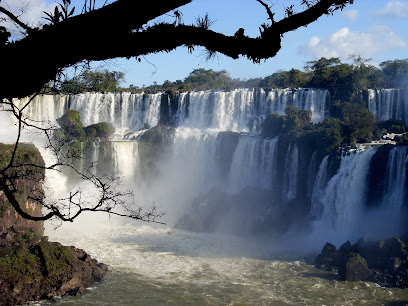
Hito Tres Fronteras
Experience the breathtaking convergence of Argentina, Brazil, and Paraguay at Hito Tres Fronteras, a must-see landmark in Puerto Iguazú.
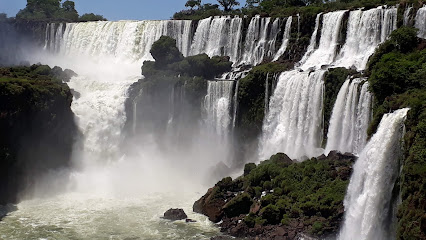
La Aripuca
Discover La Aripuca, an ecological park in Puerto Iguazú that blends nature, culture, and sustainability for an unforgettable experience.
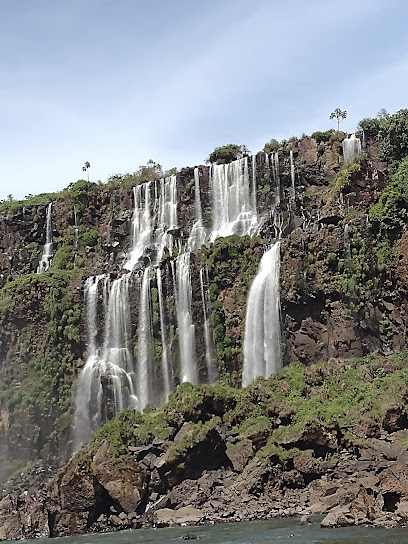
Jardin de los Picaflores
Explore the vibrant world of birds at Jardin de los Picaflores in Puerto Iguazú, a serene haven for nature lovers and wildlife enthusiasts.
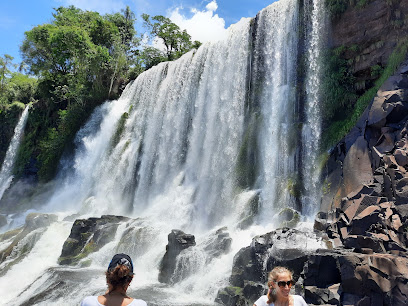
Paseos de Luna Llena en las Cataratas del Iguazú
Discover the breathtaking allure of Iguazu Falls under a full moon, where nature's beauty is illuminated and magic awaits in the heart of Argentina's national park.
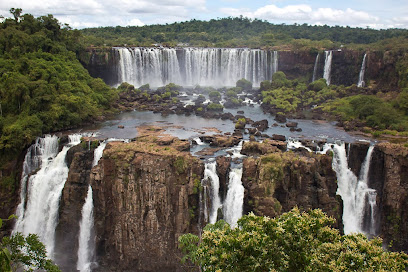
Monumento a las Cataratas del Iguazú
Explore the enchanting Monument to the Iguazú Falls, a tribute to nature's beauty amidst the bustling heart of Buenos Aires.

Iguazu National Park Nature Interpretation Center
Explore the Iguazu National Park Nature Interpretation Center and discover the stunning biodiversity of Argentina's breathtaking landscapes.
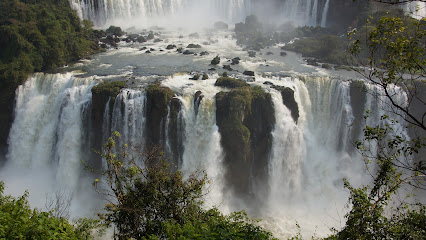
Iguazú National Park
Experience the breathtaking beauty of Iguazú National Park, home to stunning waterfalls and lush rainforests in Argentina.

Birding Iguazú
Explore the vibrant avian paradise at Birding Iguazú, where nature and birdwatching unite in the heart of Argentina's wildlife sanctuary.
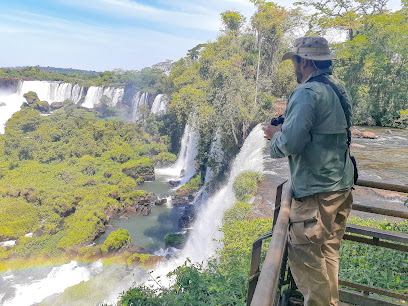
Unmissable attractions to see
Iguazu Falls
Experience the breathtaking beauty of Iguazu Falls, a UNESCO World Heritage site in Argentina, featuring stunning waterfalls and lush rainforest.
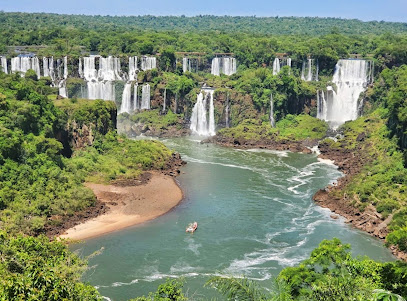
Marco das Três Fronteiras (Brasil)
Explore the captivating Marco das Três Fronteiras, where Brazil, Argentina, and Paraguay meet, offering stunning views and rich cultural experiences.
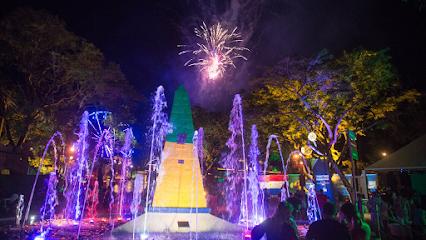
Shopping del Este
Discover the best shopping experience in Ciudad del Este at Shopping del Este, where luxury meets local charm in a vibrant atmosphere.

Güirá Oga
Explore Güirá Oga, an enchanting wildlife refuge in Puerto Iguazú, where conservation meets adventure and nature comes alive.
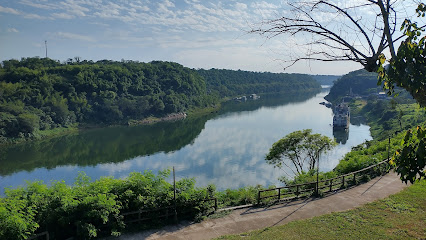
Macuco Safari
Discover the breathtaking beauty of Iguaçu Falls with Macuco Safari, an unforgettable adventure in the heart of Iguaçu National Park.
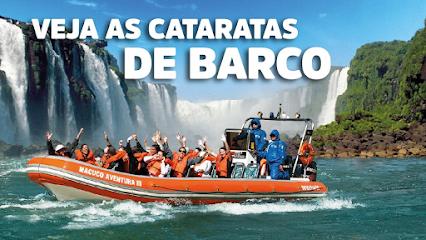
Dreams Ice Bar
Experience the cool and magical atmosphere of Dreams Ice Bar in Foz do Iguaçu, a unique attraction filled with ice sculptures and refreshing drinks.

Jardin de los Picaflores
Discover the serene beauty of Jardin de los Picaflores, a bird watching paradise in Puerto Iguazú, where nature and wildlife thrive in harmony.
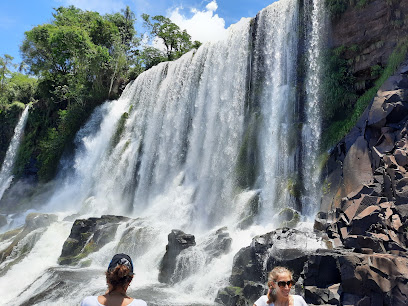
Catamaran: Cruceros Iguazu
Discover the breathtaking Iguazu River with Catamaran: Cruceros Iguazu, where stunning landscapes and vibrant wildlife await every visitor.

Vale dos Dinossauros
Explore the prehistoric wonders of Vale dos Dinossauros in Foz do Iguaçu, where life-sized dinosaurs bring ancient history to life in a breathtaking natural setting.
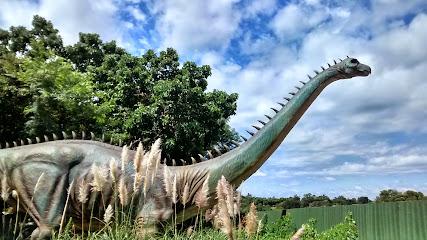
La Casa de Botellas
Explore the vibrant artistry of La Casa de Botellas, a stunning eco-friendly attraction in Iguazu, where sustainability meets creativity.
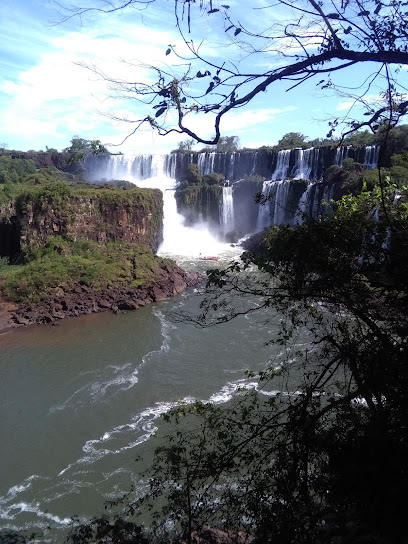
Orquideario del Indio Solitario
Explore the vibrant world of orchids at Orquideario del Indio Solitario, a botanical paradise in Puerto Iguazú, filled with stunning tropical flora.
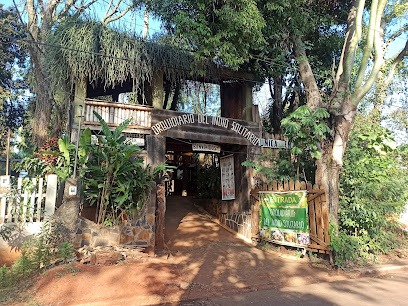
Culturas Park Iguazu
Discover the vibrant culture and thrilling adventures at Culturas Park Iguazu, a premier theme park in Puerto Iguazú, Argentina.
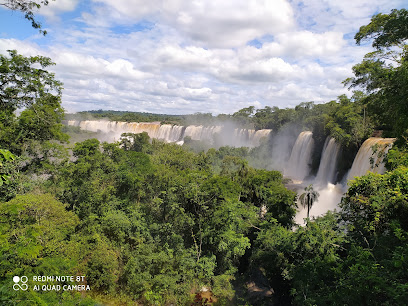
Garganta Del Diablo
Discover the breathtaking beauty of Garganta Del Diablo, the stunning highlight of Iguazu Falls, surrounded by rich biodiversity and thrilling landscapes.
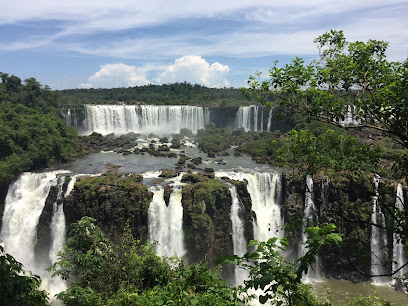
Iguazú Aventura
Experience the ultimate adventure at Iguazú Aventura, where thrilling activities and breathtaking landscapes await in Puerto Iguazú, Misiones.
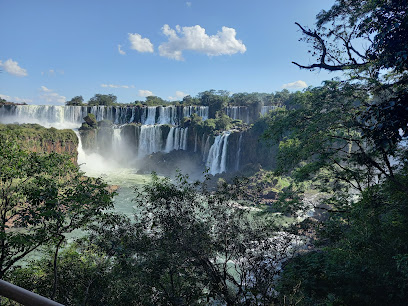
Central Station - Exit Jungle Train
Experience the vibrant jungle landscapes of Misiones Province at Central Station - Exit Jungle Train, the ultimate starting point for your adventure.
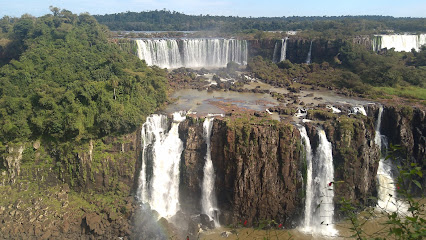
Essential places to dine
El Quincho del Tio Querido
Discover authentic Argentine cuisine at El Quincho del Tio Querido in Puerto Iguazú - where flavors meet tradition.
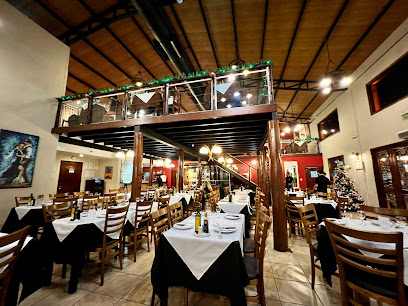
Restaurante La Rueda 1975
Experience authentic Argentine cuisine at Restaurante La Rueda 1975 in Puerto Iguazú - where every dish tells a story of flavor.
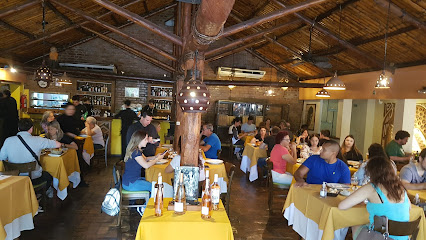
Aqva Restaurante Iguazú
Experience exquisite dining at Aqva Restaurante in Puerto Iguazú, where local flavors meet culinary artistry amidst a warm ambiance.

Te Amare Maitena
Experience authentic Argentinian cuisine at Te Amare Maitena in Puerto Iguazú, where delicious food meets vibrant local culture.
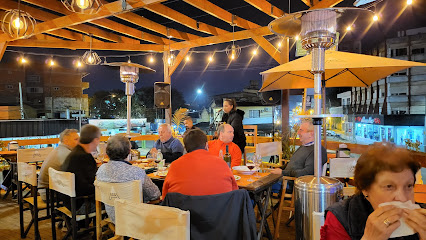
Tatu Carreta
Discover Tatu Carreta: An exceptional dining experience blending local flavors with international cuisine in the heart of Puerto Iguazú.

A piacere
Experience the flavors of Argentina at A piacere in Puerto Iguazú – where every meal is a celebration.
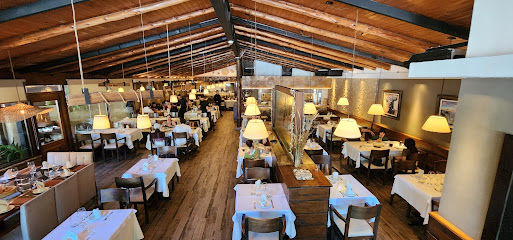
Doña Maria Restaurante
Experience authentic Argentine cuisine at Doña Maria Restaurante in Puerto Iguazú – where every meal tells a story.
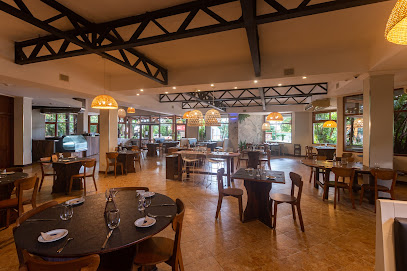
La Dama Juana Restaurant
Savor authentic Argentine cuisine at La Dama Juana Restaurant in Puerto Iguazú - where every meal is a delightful experience.
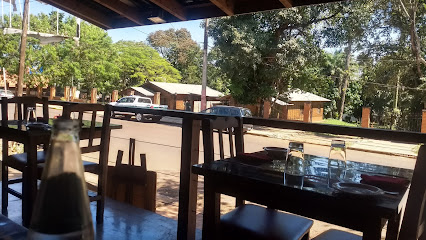
Venancio Parrilla Restaurant
Experience authentic Argentinian cuisine at Venancio Parrilla Restaurant in Puerto Iguazú - A culinary gem for meat lovers and food enthusiasts.
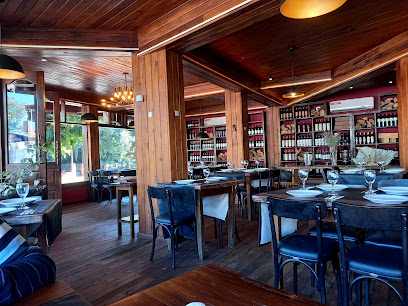
Patanegra Gourmet Iguazú
Experience exquisite Argentine cuisine at Patanegra Gourmet Iguazú, where local flavors meet gourmet innovation in a welcoming atmosphere.
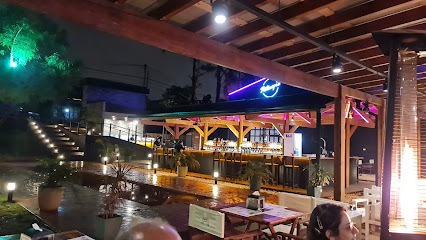
Jungle Restaurante - Puerto Iguazú
Discover the flavors of Argentina at Jungle Restaurante in Puerto Iguazú—where local ingredients meet exceptional cuisine in a lush setting.
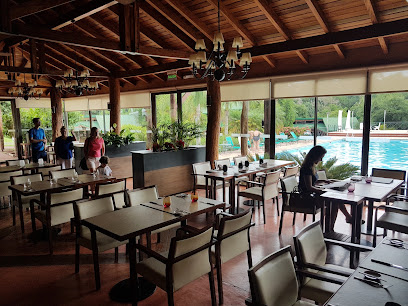
De la Fonte Restaurant- Patio de Comida by Nordic
Discover De la Fonte Restaurant in Puerto Iguazú for an unforgettable dining experience featuring local flavors and international cuisine.

The Argentine Experience
Discover authentic Argentinian cuisine at The Argentine Experience in Puerto Iguazú, where every meal tells a story and every flavor delights.
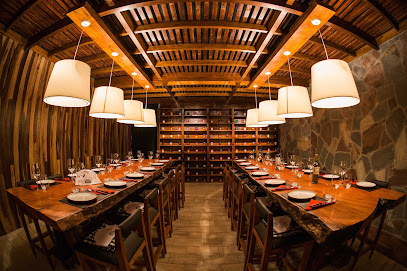
Restaurante La Selva
Experience exquisite local cuisine at Restaurante La Selva while surrounded by the stunning landscapes of Parque Nacional Iguazú.
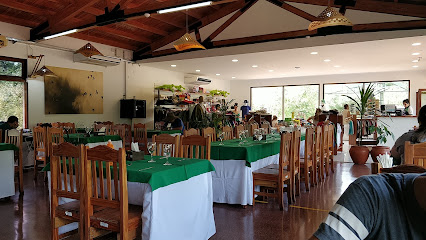
JASY RESTAURANT DE SELVA
Experience the essence of Argentinian cuisine at JASY Restaurant de Selva, where local flavors meet exceptional service amidst the beauty of Puerto Iguazú.
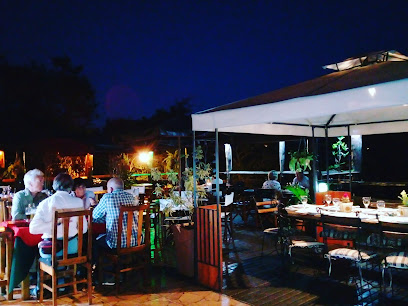
Markets, malls and hidden boutiques
Iguazú National Park
Experience the awe-inspiring beauty of Iguazú National Park, where nature's grandeur meets adventure in a dazzling display of waterfalls and wildlife.
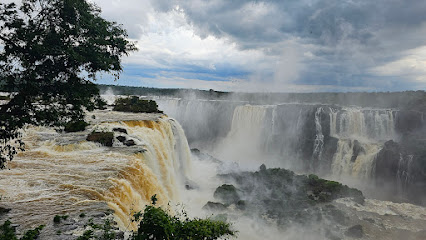
Duty Free Shop Puerto Iguazu
Discover the ultimate shopping experience at Duty Free Shop Puerto Iguazu, offering luxury goods and souvenirs just minutes from the iconic Iguazu Falls.

Paseos de Luna Llena en las Cataratas del Iguazú
Discover the breathtaking Iguazu Falls by moonlight with the unique Paseos de Luna Llena, an unforgettable nighttime adventure in nature.

Paseo Comercial Puerto Iguazú
Discover the heart of Puerto Iguazú at Paseo Comercial, your go-to shopping mall for unique finds and local culture in Misiones Province.
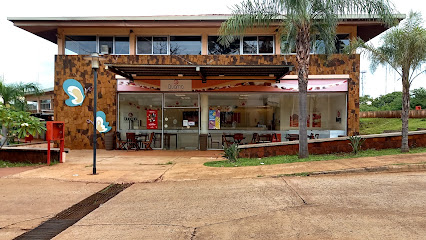
Galeria Santa Catalina
Explore Galeria Santa Catalina in Puerto Iguazú, a delightful destination for families featuring toys, baby clothing, and engaging books.

Roads Vinoteca Wine Boutique
Explore Roads Vinoteca Wine Boutique in Puerto Iguazú for a unique wine experience featuring local and international selections in a vibrant atmosphere.

Capriccio Alfajores & gourmet
Experience the authentic taste of Argentina with exquisite alfajores and a fine selection of wines at Capriccio Alfajores & Gourmet in Puerto Iguazú.
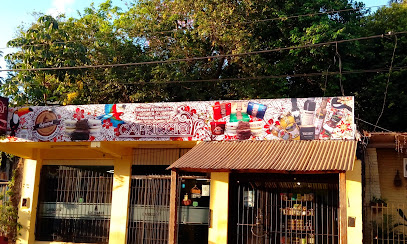
Iguazú Timbó Arte
Explore Iguazú Timbó Arte for unique clothing and accessories reflecting the vibrant culture and artistry of Puerto Iguazú, Argentina.
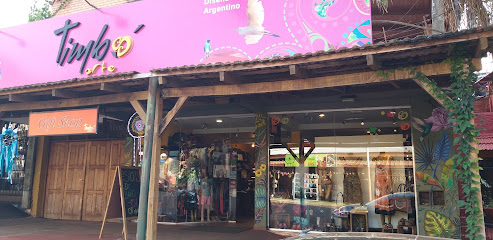
Havanna Cafe ATM
Discover the essence of Argentina's coffee culture at Havanna Cafe, nestled in the heart of breathtaking Parque Nacional Iguazú.
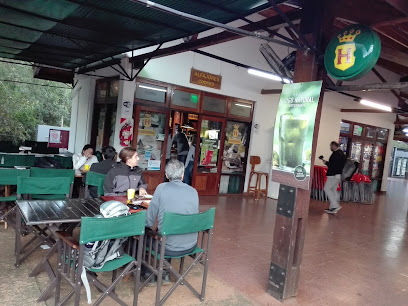
Luz Marina, Alfajores artesanales y chocolateria
Experience the rich taste of Argentina with artisanal alfajores and chocolates at Luz Marina, a charming gift shop in Puerto Iguazú.
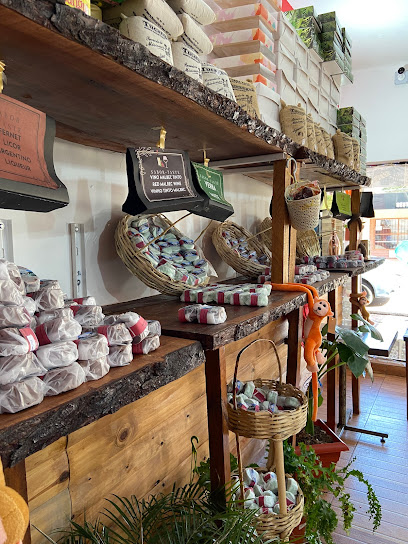
Tienda Urbana
Discover Tienda Urbana in Puerto Iguazú for unique clothing, accessories, and professional tattoo services that embody the local culture and style.

Hard Rock Cafe Iguazu Airport
Experience the fusion of rock music and culinary delight at Hard Rock Cafe Iguazu Airport, the perfect stop for a tasty meal and unique merchandise.

Prüne
Explore Prüne in Puerto Iguazú for exquisite leather coats and stylish fashion accessories that embody Argentinian craftsmanship and elegance.

Cheeky
Explore Cheeky, Puerto Iguazú's premier children's clothing store, featuring stylish outfits and eco-friendly fashion for your little ones.

7 bocas
Discover unique fashion at 7 Bocas, a women's clothing store in Puerto Iguazú, blending local culture with contemporary styles.

Essential bars & hidden hideouts
Icebar Iguazú
Discover the magic of Icebar Iguazú, where cocktails meet ice sculptures in a frosty paradise of fun and flavor.
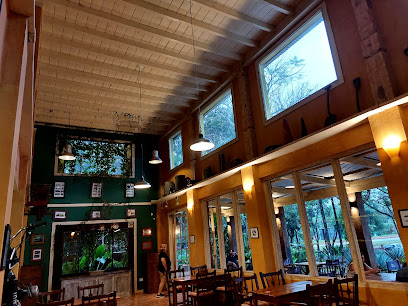
Holy Iguazú
Explore Holy Iguazú: A Brewpub Paradise for Craft Beer Lovers and Foodies in Puerto Iguazú.
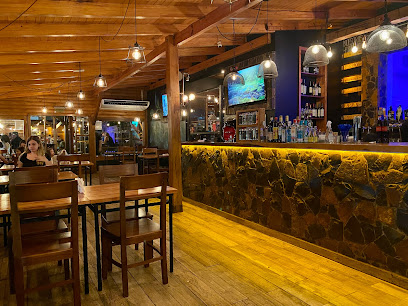
Cerveza Patagonia - Refugio Iguazú
Experience the vibrant taste of Argentina at Cerveza Patagonia in Puerto Iguazú, where artisanal beers and local cuisine come together in a lively atmosphere.
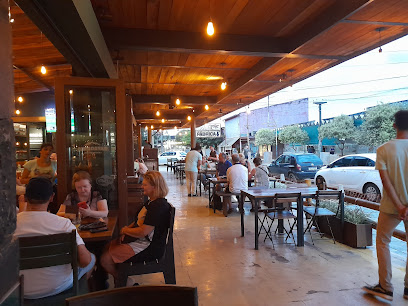
Quita Penas Resto Bar
Discover the lively Quita Penas Resto Bar in Puerto Iguazú, where local flavors meet a vibrant nightlife experience in a welcoming atmosphere.
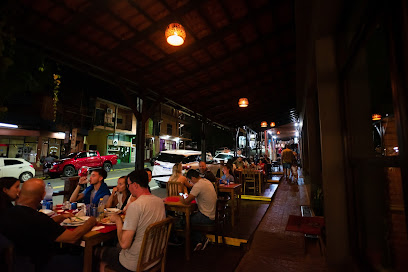
Bambu Restobar
Experience the lively ambiance and delicious flavors at Bambu Restobar, a top choice for dining and nightlife in Puerto Iguazú.
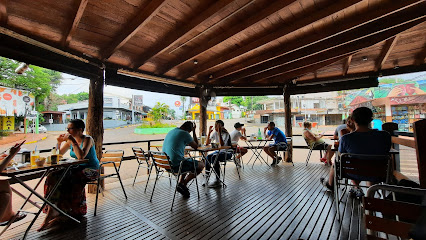
Lecker Public Bar
Discover Lecker Public Bar: Puerto Iguazú's lively brewpub with craft beers, delicious food, and a vibrant atmosphere perfect for relaxation and socializing.

Nomen Nescio
Discover the vibrant atmosphere and exquisite flavors at Nomen Nescio, the perfect bar and restaurant in Puerto Iguazú.
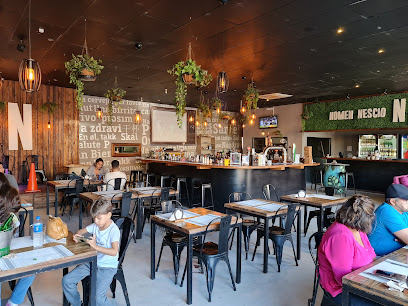
Fortin Cataratas
Discover the flavors of Argentina at Fortin Cataratas, a restaurant in the heart of Iguazú National Park, surrounded by breathtaking natural beauty.
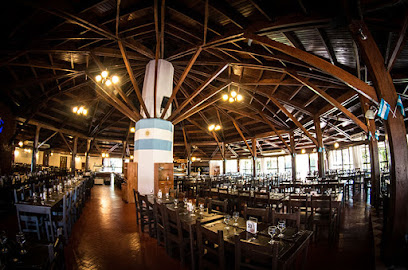
Humulus Speakeasy (bar restaurant pub)
Discover the lively blend of food, drink, and entertainment at Humulus Speakeasy in Puerto Iguazú, where every night is a celebration.
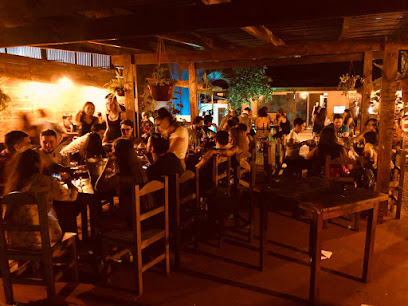
Casanova Night Club
Discover Puerto Iguazú's nightlife at Casanova Night Club, where delicious food meets vibrant music in an unforgettable atmosphere.

Vinos & Co. Puerto Iguazu
Discover the vibrant flavors of Argentine wines and delightful tapas at Vinos & Co. in Puerto Iguazu, a perfect spot to unwind after exploring the falls.
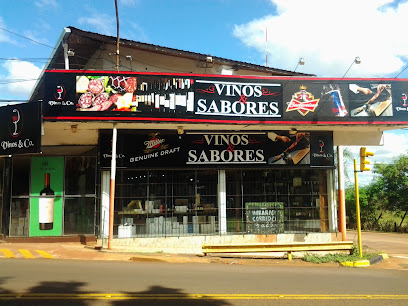
Peregrino bar y bowling
Experience the lively atmosphere at Peregrino Bar y Bowling, where fun bowling meets a vibrant bar scene in Puerto Iguazú.
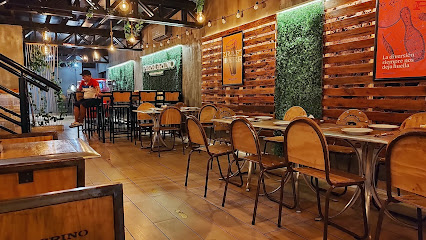
Restaurante La Selva
Experience authentic Argentine cuisine in the heart of Iguazú National Park, surrounded by breathtaking natural beauty and vibrant wildlife.

Wicz Bar
Discover a vibrant gastropub in Puerto Iguazú offering a fusion of traditional Argentine flavors and modern dining experiences.
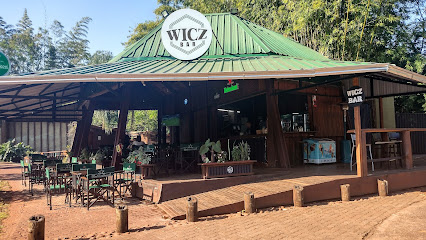
Cervecería Achával
Savor the finest craft beers and gourmet dishes at Cervecería Achával in Puerto Iguazú, where every taste tells a story of local flavor.
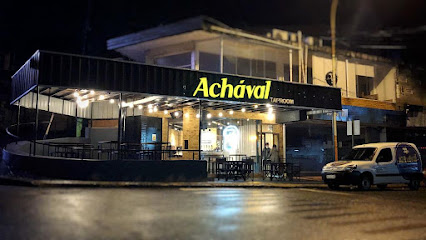
Local Phrases about Iguazu National Park
-
- HelloHola
[oh-lah] - GoodbyeAdiós
[ah-dee-ohs] - YesSí
[see] - NoNo
[noh] - Please/You're welcomePor favor/De nada
[por fah-vor/deh nah-dah] - Thank youGracias
[grah-see-ahs] - Excuse me/SorryDisculpe/Perdón
[dees-kool-peh/pehr-dohn] - How are you?¿Cómo estás?
[koh-moh ehs-tahs] - Fine. And you?Bien. ¿Y tú?
[byen. ee too] - Do you speak English?¿Hablas inglés?
[ah-blahs een-glehs] - I don't understandNo entiendo
[noh ehn-tee-ehn-doh]
- HelloHola
-
- I'd like to see the menu, pleaseMe gustaría ver el menú, por favor
[meh goos-tah-ree-ah vehr ehl meh-noo, por fah-vor] - I don't eat meatNo como carne
[noh koh-moh kahr-neh] - Cheers!¡Salud!
[sah-loohd] - I would like to pay, pleaseQuisiera pagar, por favor
[kee-see-eh-rah pah-gahr, por fah-vor]
- I'd like to see the menu, pleaseMe gustaría ver el menú, por favor
-
- Help!¡Ayuda!
[ah-yoo-dah] - Go away!¡Vete!
[veh-teh] - Call the Police!¡Llama a la Policía!
[yah-mah ah lah poh-lee-see-ah] - Call a doctor!¡Llama a un doctor!
[yah-mah ah oon dohk-tohr] - I'm lostEstoy perdido
[ehs-toy pehr-dee-doh] - I'm illEstoy enfermo
[ehs-toy ehn-fehr-moh]
- Help!¡Ayuda!
-
- I'd like to buy...Me gustaría comprar...
[meh goos-tah-ree-ah kohm-prahr] - I'm just lookingSólo estoy mirando
[soh-loh ehs-toy mee-rahn-doh] - How much is it?¿Cuánto cuesta?
[kwan-toh kwehs-tah] - That's too expensiveEs demasiado caro
[ehs deh-mah-see-ah-doh kah-roh] - Can you lower the price?¿Puede bajar el precio?
[pweh-deh bah-har ehl pree-syoh]
- I'd like to buy...Me gustaría comprar...
-
- What time is it?¿Qué hora es?
[keh o-rah ehs] - It's one o'clockEs la una
[ehs lah oo-nah] - Half past (10)Y media (10)
[ee meh-dee-ah (diez)] - MorningMañana
[mah-nyah-nah] - AfternoonTarde
[tahr-deh] - EveningNoche
[noh-cheh] - YesterdayAyer
[ah-yehr] - TodayHoy
[oy] - TomorrowMañana
[mah-nyah-nah] - 1Uno
[oo-noh] - 2Dos
[dohs] - 3Tres
[trehs] - 4Cuatro
[kwa-troh] - 5Cinco
[seen-koh] - 6Seis
[says] - 7Siete
[syeh-teh] - 8Ocho
[oh-choh] - 9Nueve
[nweh-veh] - 10Diez
[dee-ehs]
- What time is it?¿Qué hora es?
-
- Where's a/the...?¿Dónde está...?
[dohn-deh ehs-tah] - What's the address?¿Cuál es la dirección?
[kwal ehs lah dee-rehk-syon] - Can you show me (on the map)?¿Puede mostrarme (en el mapa)?
[pweh-deh mohs-trar-meh (ehn ehl mah-pah)] - When's the next (bus)?¿Cuándo es el próximo (autobús)?
[kwan-doh ehs ehl proh-see-moh (ow-toh-boos)] - A ticket (to ....)Un boleto (a ...)
[oon boh-leh-toh (ah ...)]
- Where's a/the...?¿Dónde está...?
History of Iguazu National Park
-
The name 'Iguazu' comes from the Guarani words 'y' meaning 'water' and 'ûasú' meaning 'big.' According to Guarani legend, the falls were created when a deity, enraged by a beautiful woman named Naipí escaping with her mortal lover Tarobá in a canoe, sliced the river in half, creating the waterfalls and condemning the lovers to an eternal fall.
-
The first European to record the existence of Iguazu Falls was Spanish Conquistador Álvar Núñez Cabeza de Vaca in 1541. The falls initially bore his name but were later reverted to their indigenous name. His accounts brought the majesty of the falls to the attention of the Western world.
-
Iguazu National Park was established in 1934, with the aim of preserving the stunning natural beauty and diverse ecosystem of the Iguazu Falls region. The park was recognized for its exceptional biodiversity, including over 2,000 species of plants and a wide array of wildlife.
-
In 1984, Iguazu National Park was designated as a UNESCO World Heritage Site due to its unique natural beauty and the ecological importance of its subtropical rainforest. This designation helped to increase international awareness and tourism, further encouraging conservation efforts.
-
The Guarani people have lived in the region around Iguazu Falls for centuries. Their rich cultural heritage includes traditional music, dance, and crafts, as well as a deep spiritual connection to the land and its natural features. The Guarani continue to play an important role in the cultural landscape of the park.
-
Tourism in Iguazu National Park began to flourish in the mid-20th century, with the construction of infrastructure such as walkways, viewing platforms, and lodges. Today, the park attracts over a million visitors annually, drawn by the breathtaking scenery and the opportunity to experience one of the world's most spectacular waterfalls.
-
Ongoing conservation efforts in Iguazu National Park focus on protecting its diverse ecosystems from threats such as deforestation, poaching, and invasive species. Collaborative initiatives involving local communities, government agencies, and international organizations aim to ensure the long-term preservation of this natural wonder.
Iguazu National Park Essentials
-
Iguazu National Park is located in the northeastern corner of Argentina, near the border with Brazil and Paraguay. The nearest airport is Cataratas del Iguazu International Airport (IGR), located about 17 kilometers from the park. Direct flights are available from major Argentine cities such as Buenos Aires, Cordoba, and Rosario. Alternatively, you can fly into Foz do Iguaçu International Airport (IGU) in Brazil, which is about 30 kilometers from the park. From the airport, you can take a taxi, shuttle service, or rent a car to reach the park entrance.
-
Within Iguazu National Park, transportation options include park-operated shuttle buses, taxis, and rental cars. The park's shuttle buses connect major points of interest, such as the main entrance, the Visitor Center, and various trailheads. Taxis are readily available at the airport and within the town of Puerto Iguazu. If you prefer more flexibility, renting a car is a convenient option, allowing you to explore both the Argentine and Brazilian sides of the falls.
-
The official currency in Argentina is the Argentine Peso (ARS). Credit cards are widely accepted at hotels, restaurants, and larger shops in Puerto Iguazu and within the national park. However, it is advisable to carry some cash, especially for smaller establishments and local vendors. ATMs are available in Puerto Iguazu, but it’s wise to withdraw sufficient cash before heading into the park.
-
Iguazu National Park is generally safe for tourists. However, standard safety precautions should be taken. Avoid walking alone at night in unfamiliar areas and be cautious of petty theft in crowded places. The town of Puerto Iguazu is relatively safe, but it is advisable to stay vigilant, particularly in busier areas. Always use authorized taxis or transportation services.
-
In case of an emergency, dial 911 for immediate assistance. The Visitor Center within the park has first aid facilities, and there are medical clinics and a hospital in Puerto Iguazu. It is recommended to have travel insurance that covers medical emergencies. For minor health issues, pharmacies are available in Puerto Iguazu where you can purchase over-the-counter medications.
-
Fashion: Do wear comfortable, weather-appropriate clothing and sturdy footwear for walking the trails. Avoid wearing flip-flops, as the paths can be uneven and slippery. Religion: Do show respect when visiting local religious sites by dressing modestly and behaving quietly. Public Transport: Do be respectful and give up your seat to elderly passengers. Don't eat or drink on public transport. Greetings: Do greet people with a friendly 'Hola' or 'Buen día'. A handshake is common in formal settings. Eating & Drinking: Do try local delicacies and accept food offerings graciously. Don’t refuse hospitality, as it is considered impolite.
-
To experience Iguazu National Park like a local, consider visiting during the shoulder seasons (April-May and September-October) when the weather is pleasant, and the park is less crowded. Engage with local guides who can provide in-depth knowledge about the flora, fauna, and history of the park. Don’t miss the Garganta del Diablo (Devil’s Throat) viewpoint for a breathtaking experience. For an authentic culinary experience, try the local specialty 'chipa', a type of cheese bread, and enjoy a traditional Argentine 'asado' (barbecue) in Puerto Iguazu.
Nearby Cities to Iguazu National Park
-
Things To Do in Foz do Iguaçu
-
Things To Do in Hernandarias
-
Things To Do in Villarrica
-
Things To Do in Encarnacion
-
Things To Do in Carmen del Parana
-
Things To Do in San Bernardino
-
Things To Do in Ypacarai
-
Things To Do in Aregua
-
Things To Do in Asuncion
-
Things To Do in Florianópolis
-
Things To Do in Tacuarembó
-
Things To Do in São Paulo
-
Things To Do in Fray Bentos
-
Things To Do in Rosario
-
Things To Do in Maldonado










